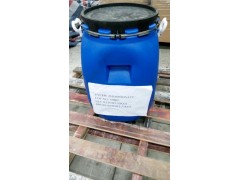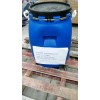Application:
FR-CU is an efficient cyclic phosphonate flame retardant for the treatment of textile products. It is non-corrosive with high phosphorus content, excellent water solubility on a wide range of fabric type. It mainly used in furnishing, curtaining, building, special workwear and automotive applications. It is particularly suitable for the treatment of polyester fabrics , T/C blends and PU coating to impart a finish that is durable to washing and dry-cleaning.
Typical application process:
1. Treatment of polyester fabric and T/C blends
A. Recommendatory formulation
Flame retardant 6~15kgs
added water, 20kgs stirred evenly
added 20% conc.Na2HPO4 or Na2CO3 4~8kgs pH is buffered to 5.5~6.5
or 25% conc. aqua ammonia
added penetrating agent 0.05~0.2kgs mixed evenly
additional water the formulation was diluted by water to 100kgs.
B. Procedure
1) Fabrics for treatment with flame retardant should be clean and absorbent. Starch
and other sizes should be removed before processing.
2)Fabrics shall be treated by padding, dipping according to fabric composition, weight and construction.
3.)120~140°C×60sec., pre-drying
4) High temperature thermofixation process:
PET fabric: plain fabric 195~205°C×40~60sec.
knitted fabric 185~205°C×40~60sec.
PA fabric: 160~180°C×40~60sec.
5)Cooling, rolling up the treated fabric. To improve the hand feel, fabric can be cleaned again if necessary to remove the un-affixed flame retardant on the fabric.
2. Coating treatment of Polyester fabric and PU fabric
Formulation details
The formulation is dried and cured in a single pass at 150°C for 120 seconds.
The formulation is buffered to pH 5 using Sodium Carbonate. The added amount of soda ash is
Additional item
Required add-on level for polyester fabric is only no less than 1.4% w/w to achieve performance if the flame retardant is affixed effectively on the fabric.
(The above mentioned information is according to our own acknowledge and experience. It is advised to make lab trail and small batch trail before formal treatment to get optimum processing condition.)
2. If the treatment is completed, after 50 times of washing under 60°C, there is still at least 90% flame retardant on the fabric.
3. Considering the treatment of high temperature thermofixation processing, we think it is very





